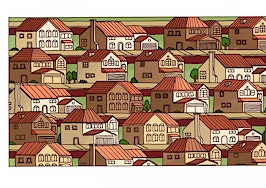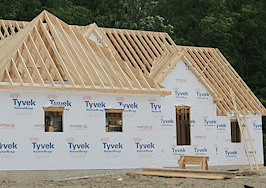With inventory at historically low levels and demand for housing skyrocketing in most markets, economic analysts and real estate experts believe 2018 will be the Year of the Seller.
With few exceptions, analysts contacted by Inman News forecasted yet another year in which a scarcity of homes in the real estate market will allow private and institutional sellers to keep prices high, especially as a growing segment of first-time millennial buyers take the homeownership plunge.
“Clearly, 2018 appears to be another seller’s market,” said Mark Fleming, chief economist at First American Financial Corporation. “The shortage of supply relative to increasing millennial demand will not change next year. In fact, it may be exacerbated as more millennials decide to become homeowners and more sellers become prisoners in their own homes, as mortgage rates rise and fear of not being able to find something to buy increases.”
Low inventory, perhaps more than any other economic driver, will be a major hurdle for buyers in the coming year. Indeed, even as overall housing starts spiked to 1.297 million units in November, most experts believe bouncing back to a 50-year average of 1.5 million new units will be no easy task — and until then, the listings shortage will dramatically affect pricing, for better or for worse.
“Builders have been ramping up somewhat over the past year, and that should continue going forward,” said Svenja Gudell, chief economist at Zillow. “But in order to satisfy demand from entry-level buyers in particular, builders will need to find more affordable sites farther from job centers — and it’s unclear if buyers will be willing to sacrifice their commutes for affordable homes as they did in years past. And in general, it will take many years of above-average building activity to help erase the housing deficit we’ve created after years of under-building.”
According to Redfin’s 2018 housing market forecast, a whopping 25 percent of homes sold within two weeks or less during the peak of the buying season in 2017, and nearly one in five homes, or 19 percent, left the market in less than a week.
But mortgage rates, which are expected to rise, on average, to just 4.5 percent by the end of 2018 — and changes to the tax code that may deincentivize homeownership, could tip the balance of power to buyers and give them more room to negotiate, especially in luxury markets.
“I think you’re going to see sellers have less pricing power than they did this year, particularly in states like New York and California,” said Nela Richardson, chief economist at Redfin. “Buyers are going to be ready to play hardball because they’re not getting as much from buying the house as they did this year. And maybe less pricing power in other places, too, because consumers can only pay so much and prices have gone up so strongly.”
Lawrence Yun, chief economist at the National Association of Realtors, echoed a similar sentiment: “The housing shortage will still persist in many markets due to the legacy of slow rate of homebuilding over the past decade,” Yun said. “But due to the tax reform providing less financial benefit to be a homeowner, the overall price increase will be much softer in 2018, by 2-4 percent.”
Added Steve Cook, a real estate communications consultant at commsconsulting.com:
“The inventory drought will continue to be enough of a factor to keep supplies below normal. Most markets will continue to be sellers’ markets, especially for entry-level homes, hotter markets and markets where prices are high and new construction is costly, like the Pacific Coast. Luxury and premium markets will be more evenly split between buyers and sellers.”
Email Jotham Sederstrom






